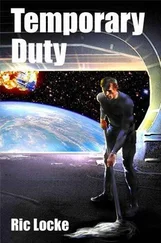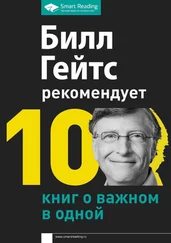Although I had decades of experience in the national security arena, I never made any claim to expertise as a military strategist or defense reformer. I had, however, as I said earlier, successfully led and run huge organizations. I had been brought in to turn around a failing war effort. My fight to sustain minimal support in Congress so that the troops would have time to accomplish that turnaround was tough enough, but I soon realized I would also have to fight the Pentagon itself. I decided I had to be the principal advocate in Defense for the commanders and the troops. I would be both “urgent” and “ruthless.”
To complicate matters, all the services regarded the counterinsurgency wars in Iraq and Afghanistan as unwelcome military aberrations, the kind of conflict we would never fight again—just the way they felt after Vietnam. The services all wanted to get back to training and equipping our forces for the kinds of conflict in the future they had always planned for: for the Army, conventional force-on-force conflicts against nation-states with large ground formations; for the Marine Corps, a light, mobile force operating from ships and focused on amphibious operations; for the Navy, conventional maritime operations on the high seas centered on aircraft carriers; for the Air Force, high-tech air-to-air combat and strategic bombing against major nation-states.
I agreed with the need to be prepared for those kinds of conflicts. But I was convinced that they were far less likely to occur than messy, smaller, unconventional military endeavors. I was also convinced, based on history and experience, that we were utterly unable to predict what kinds of future conflicts we would face. In fact, after Vietnam, when we used our military—in Grenada, Lebanon, Libya (twice), Panama, Haiti, the Balkans, and elsewhere—it was usually in relatively small-scale but messy combat. The one time we used large conventional formations with limited objectives—against Iraq to liberate Kuwait in 1991—the war ended in one hundred hours. The war in Afghanistan, from its beginning in 2001, was not a conventional conflict, and the second war against Iraq began with a fast-moving conventional offensive that soon deteriorated into a stability, reconstruction, and counterinsurgency campaign—the dreaded “nation-building” that the Bush administration took office swearing to avoid. In not one of those conflicts had we predicted even six months beforehand that we would be militarily engaged in those places. I felt strongly that we had to prepare our forces in the future, both in training and in equipment, to fight all along the spectrum of conflict, from counterterrorism to taking on well-armed nonstate groups (such as the terrorist group Hizballah) to fighting conventional nation-states. Developing this broad range of capabilities meant taking some time and resources away from preparations for the high-end future missions the military services preferred. I would take on that fight in mid-2008, but in 2007 and early 2008, my focus was on getting the troops in Iraq and Afghanistan the equipment and support they needed.
MINE-RESISTANT, AMBUSH-PROTECTED VEHICLES
On April 19, 2007, while on an official visit to Israel, I noticed in the Pentagon’s daily press summary, “The Early Bird,” an article by Tom Vanden Brook in USA Today that began, “In more than 300 attacks since last year, no Marines have died while riding in new fortified armored vehicles the Pentagon hopes to rush to Iraq in greater numbers this year, a top Marine commander in Anbar province said.” The article described the vehicles’ raised, V-shaped hulls that deflected the force of blasts from homemade bombs buried in roadways—improvised explosive devices (IEDs). It quoted Marine Brigadier General John Allen, deputy commander of coalition forces in Anbar, as saying there had been eleven hundred attacks on these vehicles in the preceding fifteen months, with an average of less than one injured Marine per attack. I flew on to Iraq that afternoon for twenty-four hours for the key meeting with David Petraeus about troop drawdowns in the fall, returned home for thirty-six hours, and then, on the twenty-second, began a trip to Russia, Poland, and Germany. But I continued to think about this new kind of vehicle and asked for a briefing on it once I was back in Washington.
IEDs had been a problem in Iraq from the early days of the war. As time went by, the bombs became bigger and the insurgents more clever in how they planted, hid, and detonated them. By the end of 2006, the number of IEDs deployed by our enemies in Iraq accounted for up to 80 percent of soldier casualties. To make matters worse, Iran was providing its surrogates in Iraq with “explosively formed projectiles,” a fairly sophisticated warhead that, when fired, in essence became a molten metal slug capable of penetrating the armor of our heaviest vehicles, including the Abrams tank. To develop countermeasures against IEDs and get solutions, and training, to the field quickly, the Army created a task force that changed form several times, but ultimately, in February 2006, at Secretary Rumsfeld’s direction, it became the inelegantly named but critically important Joint Improvised Explosive Device Defeat Organization. It received billions of dollars to develop surveillance and jamming systems to defeat the IED bomb-building networks and to detect and disable IEDs before they exploded. The organization was an early example of a secretary and deputy secretary of defense concluding they had to go outside the normal bureaucratic structure to get a critical combat task accomplished.
Despite these efforts, more and more of our troops were being burned, maimed, and killed by IEDs, many of them in Humvees. Humvees could be reinforced with armor on the sides, but there were few practical options left to further armor the underbelly of the vehicle. Soldiers were reduced to putting sandbags on the floors of the Humvees to try to protect themselves. It didn’t help much. Too many Humvees became funeral pyres for our troops, and I would see some of the surviving victims at the burn unit at Brooke Army Medical Center in San Antonio. Over time more and more side armor was attached to the Humvees, as additional protection from attacks by rockets, grenades, and other weapons, but it still provided little or no protection from bombs that blew up under the vehicles.
I received my first briefing on the mine-resistant, ambush-protected (MRAP) vehicle I had read about in USA Today on April 27, 2007. The secretary of defense’s conference room is not a big one by Washington (and Pentagon) standards, and it is quite plain, which suited me fine. I always tried to set an informal atmosphere so people would be more inclined to speak up; I don’t think I ever wore a suit jacket to a meeting of Defense officials in that room. The table seats about twenty, with another twelve or so chairs lining the wall. There is a screen for the omnipresent Power-Point slides, and combat photographs line the walls—including one of Doug Zembiec, “the Lion of Fallujah,” whose story had caused me to choke up publicly at the Marine Corps Association annual dinner. There was also a coffee cart, essential to my alertness and my self-discipline—for some reason, a coffee cup in my hand made it easier for me not to fly off the handle in briefings that were often frustrating and maddening. There was always a behind-the-scenes battle involving myriad people pushing and shoving to be in meetings I held, and it fell to my two senior assistants to decide who could or could not attend. I guess people felt they needed to be there to demonstrate to others that they were “on the inside” on issues or to protect their sector’s equities. Unfortunately, those in the room rarely gave me the background details—especially about bureaucratic infighting—on the matter at hand that would have helped me understand how the problem had ended up on my desk.
Читать дальше












